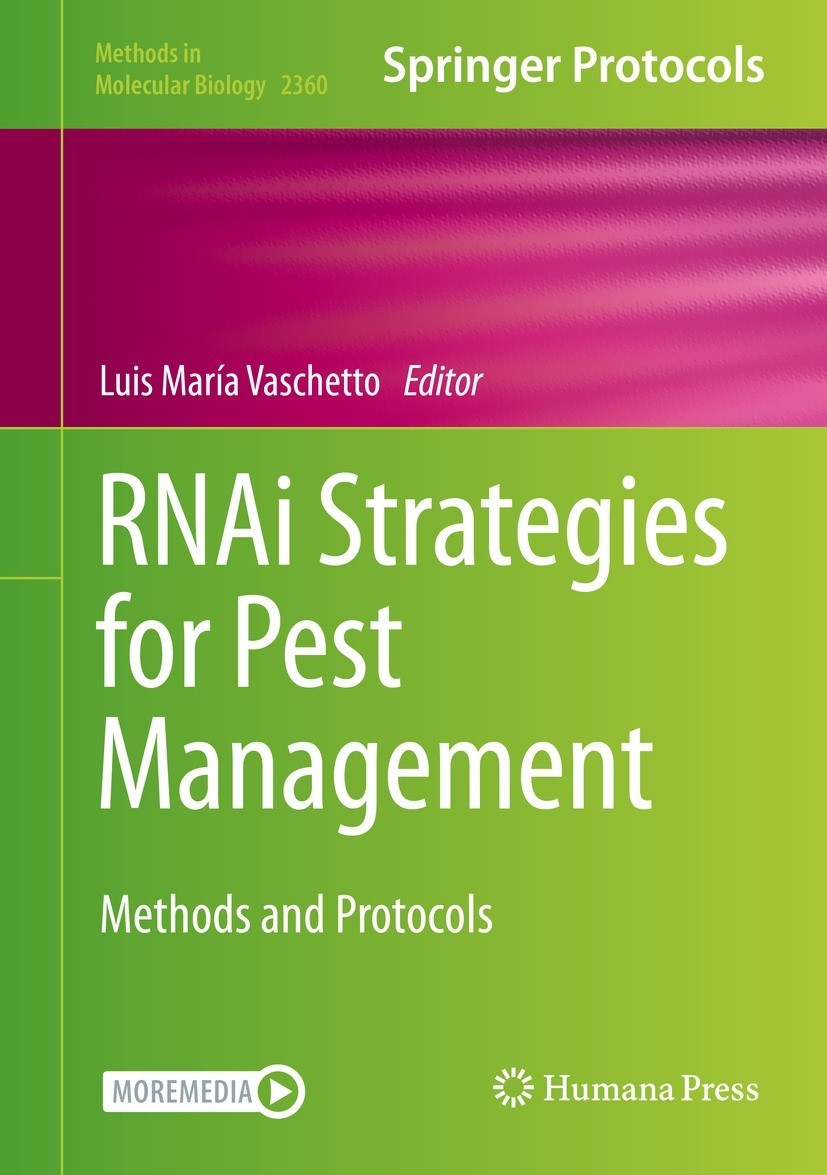Ver ítem
- xmlui.general.dspace_homeCentros e Institutos de InvestigaciónCICVyA. Centro de Investigación en Ciencias Veterinarias y AgronómicasInstituto de Microbiología y Zoología AgrícolaPartes de librosxmlui.ArtifactBrowser.ItemViewer.trail
- Inicio
- Centros e Institutos de Investigación
- CICVyA. Centro de Investigación en Ciencias Veterinarias y Agronómicas
- Instituto de Microbiología y Zoología Agrícola
- Partes de libros
- Ver ítem
RNAi Expression in Cotton for Control of Herbivorous Insects
Resumen
Cultivated cotton (Gossypium hirsutum) is heavily attacked by various species of insects worldwide and breeding of new varieties resistant to pests is still a hard battle to win. RNAi technology is an important reverse genetics tool to induce gene silencing in eukaryotic organisms and produce phenotypic modifications. In cotton, RNAi was applied to investigate gene function and enhance resistance to insects and pathogens. Different methods and techniques
[ver mas...]
Cultivated cotton (Gossypium hirsutum) is heavily attacked by various species of insects worldwide and breeding of new varieties resistant to pests is still a hard battle to win. RNAi technology is an important reverse genetics tool to induce gene silencing in eukaryotic organisms and produce phenotypic modifications. In cotton, RNAi was applied to investigate gene function and enhance resistance to insects and pathogens. Different methods and techniques can be used to synthetize double stranded RNA (dsRNA) into plant cells. The Agrobacterium-mediated transformation is a common method to introduce RNAi binary plasmids into cotton genome and obtain stable transgenics plants. This methodology includes the coculture of cotton tissues with Agrobacterium cultures, selection of transgenic cells and induction of somatic embryogenesis to finally obtain transgenic plants after a relatively long period of time. The transient synthesis of dsRNA mediated by virus-induced gene silencing (VIGS) in cotton is an alternative to anticipate the silencing effect of a specific RNA sequence, prior to the development of a stable transgenic plant. VIGS vectors are incorporated into the plant by agroinfiltration technique. During VIGS replication inside plant cells, synthetized dsRNA allows the study on specific heterologous gene expression including the phenotypic effect on herbivorous target pests, thus facilitating a rapid evaluation of dsRNA expressed in cotton plants against individual insect target genes. Here we describe the complementation of these two techniques to evaluate RNAi-based cotton plant protection against insect pests.
[Cerrar]

Fuente
RNAi Strategies for Pest Management : methods and protocols / editors: Luis María Vaschetto. New York: Humana, 2021. p. 217–233
Fecha
2022
Editorial
Springer
Serie
Methods in Molecular Biology (Springer)
ISBN
978-1-0716-1633-8
Formato
pdf
Tipo de documento
parte de libro
Proyectos
(ver más)
Palabras Claves
Derechos de acceso
Restringido
 Excepto donde se diga explicitamente, este item se publica bajo la siguiente descripción: Creative Commons Attribution-NonCommercial-ShareAlike 2.5 Unported (CC BY-NC-SA 2.5)
Excepto donde se diga explicitamente, este item se publica bajo la siguiente descripción: Creative Commons Attribution-NonCommercial-ShareAlike 2.5 Unported (CC BY-NC-SA 2.5)
Metadatos
Mostrar el registro completo del ítemÍtems relacionados
Mostrando ítems relacionados por Título, autor o materia.
-
Manejo de malezas en el cultivo de pecán
Taiariol, Dario (EEA Bella Vista, INTA, 2022-12-15)Una planta no deseada en un lugar no deseado. No siempre invasivas o salvajes. Efectos adversos de malezas. -En plantas jóvenes: Compite y afecta la disponibilidad de nutrientes, luz y agua y, además, alelopatías. - En ... -
Taladrillo de los forestales: algunos aspectos de su biología, detección y manejo de poblaciones
Cichon, Liliana; Garrido, Silvina Alejandra; Lago, Jonatan; Ahmad, Samir (EEA Alto Valle, INTA, 2013)Megaplatypus sulcatus Chapius, conocido vulgarmente como "barreno" o "taladrillo de los forestales", es un coleóptero que produce severos daños en plantaciones forestales y frutales perforando el tronco de los árboles, ... -
Revalorización del Complejo de Depredadores Polífagos Asociado al Cultivo de los Cítricos, Como Agentes de Control Biológico de Plagas Claves
Bouvet, Juan Pedro (Departamento de Producción Vegetal, Universitat Politècnica de València, 2018-12)Dentro de los enemigos naturales de plagas en los agroecosistemas, los depredadores han sido considerados como uno de los grupos de mayor importancia. Sin embargo, su compleja biología y comportamiento ha obstaculizado en ...

